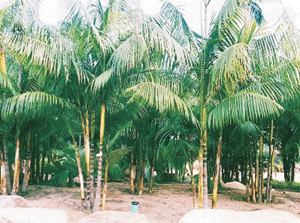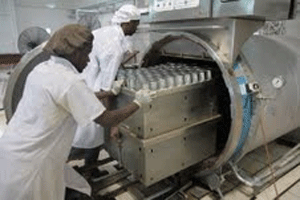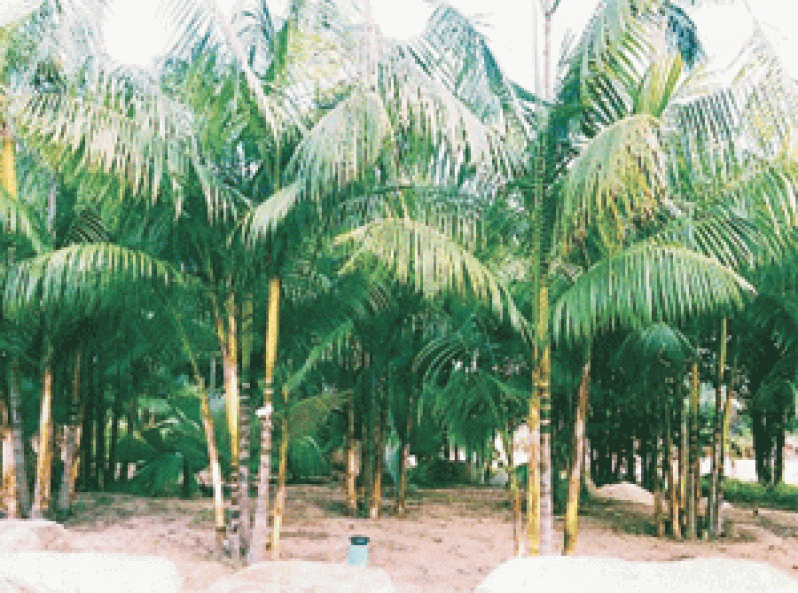Enjoyable! Cut or uncut
THE heart of the Acai Palm tree, whose botanical name is Euterpe oleracea (EO), is a highly prized dish, often called a “millionaire’s salad” because of its price, especially in European countries.  The Acai is also a very ornamental palm, with multiple branches which can reach up to 80 feet in height.
The Acai is also a very ornamental palm, with multiple branches which can reach up to 80 feet in height.
A few of these palms can be found on the Linden/Soesdyke Highway in Guyana, and a very beautiful stand can be seen at the Marudi Creek resort; but the majority can be found mainly in the swampy forests, particularly along the Berbice River and in the North West District.
Brazilian native
The Acai Palm is native to Brazil, and is cultivated in the states of Pará, Amazonas, Maranhão and Amapá, especially in the Amazon River estuary. It lives in seasonally flooded habitats and along water margins, and can be found in large areas of south-eastern Brazil, Ecuador, Argentina, and Paraguay.
The vegetable harvested from the inner core and growing bud of this beautiful and economically important tree is also called palm heart, palmito, burglar’s thigh, chonta, palm cabbage or swamp cabbage.
In Guyana, proliferation of the tree is extraordinary, especially considering its intensive extraction for the delicious heart-of-palm. The Acai flowers throughout the year, and the harvesting season is usually from July to December.
Since harvesting is still a labour-intensive task, palm hearts are regarded as a delicacy. The Amazon-Caribbean Company (AMCAR), headquartered in Subryanville, Georgetown, has been harvesting uncultivated EO from the Berbice River and the North West District for several years now.
Chief Executive Officer of the company, Mr. Jean-Francois Gerin, said last week that the heart of the Acai Palm is just below the crown of the tree. The tree is cut at this point, and the “heart” is extracted and transported to factories in the North West District and at Rosignol, West Coast Berbice, where it is processed and canned for export to mainly foreign  markets.
markets.
Mr. Gerin explained that the Acai is the company’s sole source of palm cabbage, since the plant is multi-stemmed.
“It has one root, but several stems, so it has been certified as a renewable resource. You can cut a number of the stems and extract the “hearts” without killing the tree. The remaining stems will continue to grow,” he said.
In Guyana, the Acai Palm has been certified renewable since 1998. A reliable source of information on the palm tree says that Brazil was the highest producer of uncultivated hearts-of-palm, but in the 1990s, its quality went down, mostly because of unsustainable poaching for stems of their main producing species, the Euterpe edulis, which is now considered threatened with extinction in the wild.
This left the market open for Ecuador to export cultivated hearts-of-palm. Ecuador is now one of the main producers of the product.
France is said to be the largest importer of hearts-of-palm. This delicious “millionaire’s salad” is also available in local supermarkets.




.png)









